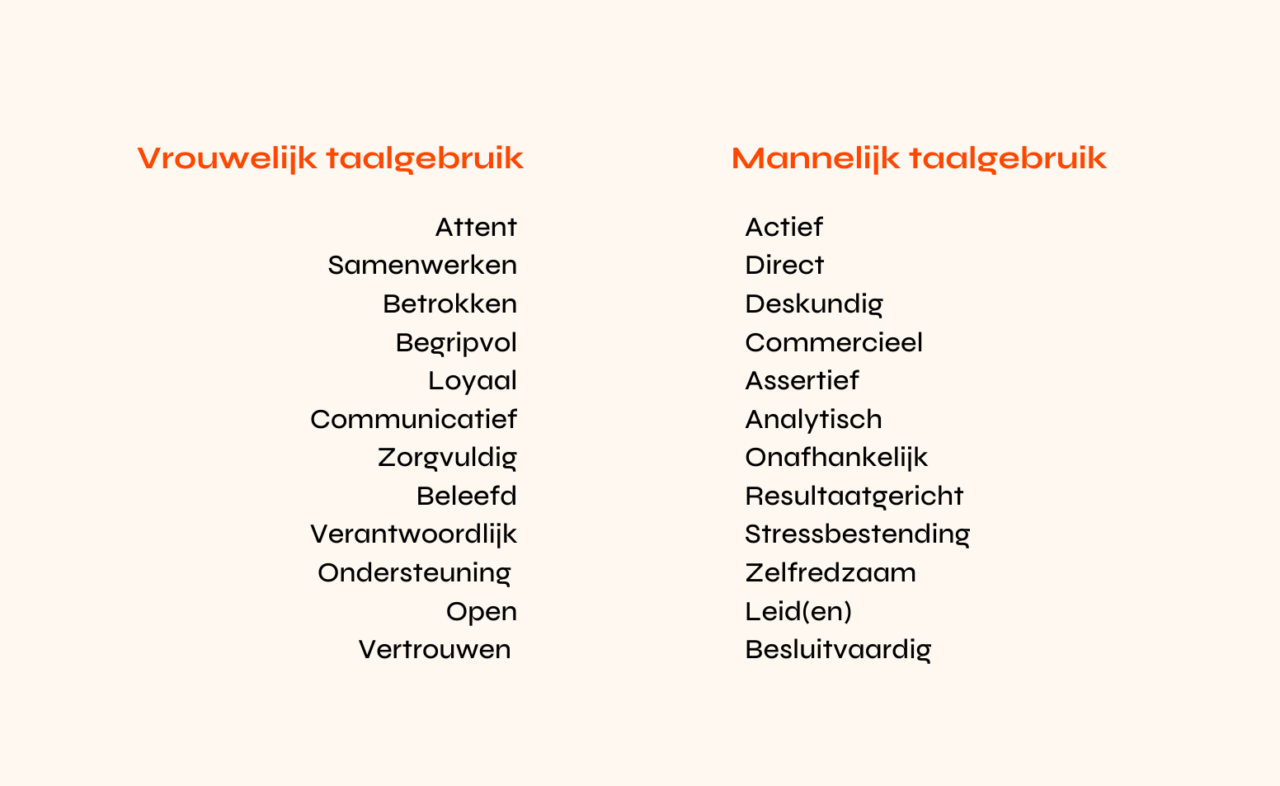How to write an inclusive job vacancy
Having a diverse and inclusive team starts with the right job vacancy. When you use too much jargon or masculine language, you risk missing out on your ideal candidate. This results in a team that lacks diversity in terms of gender, ethnicity, and specialisations. But what does a readable and inclusive job advertisement look like?
Diversity vs inclusivity
Having a diverse and inclusive team ensures that organisations are more innovative, successful, and profitable. This is evidenced by research from the Harvard Business Review. The different perspectives within a team lead to better decision-making and improved quality of products and services.
The job vacancy is the first step towards an inclusive team. Many companies in the financial sector aim to hire more female staff, but if the job description does not appeal to them, attracting the right candidates becomes difficult. Research by Sia Partners shows that currently 67% of Dutch job advertisements use more masculine than feminine language, making it harder for women to identify with the job.
Inclusivity is also different from diversity, even though they often go side by side. Your team can be diverse with a mix of ages, genders, backgrounds and specialisations, but that does not necessarily make it inclusive. Inclusivity is about the way of working. How do you deal with this diverse group of people? What is the social norm? Does everyone feel welcome, have equal rights, and are there no exclusive groups setting the tone?
Diverse hiring
An inclusive job advertisement ensures that everyone understands your text. This means avoiding too much masculine language, jargon, or typical Dutch expressions. In this way you appeal to everyone including those who are less proficient in Dutch, for example because of dyslexia or because it is not their mother tongue.
Before you start drafting the job advertisement, it is important to have a clear understanding of the competencies required for the position, the tasks the candidate will perform, and the team they will join. This will help to define the role clearly and attract candidates who can identify with it. It also minimises ambiguity in the text and incomprehensible requirements in the job.

Who is your target audience?
Understanding your target audience is crucial. Who are you writing the job advertisement for? If you want to attract younger candidates, you need to understand what motivates and appeals to them. Generation X, for example, has different needs than Generation Z. Explore what this generation finds attractive in an employer and see if you can cater to that.
Given the composition of the Dutch population, where approximately 50% are women and nearly a quarter have a migration background, it is important to offer various arrangements. These can range from flexible working hours, remote working, or swapping holidays to offering language courses, menstrual leave, or child daycare.
It’s also important not to set too many requirements in the job advertisement, as this can deter potential candidates. Women in particular, are inclined not to apply if they do not meet all the requirements, even if they are otherwise suitable for the position.
Word choice
Think carefully about the words you use in the text. Using outdated language turns off younger people. But on the other hand, using overly youthful language may not attract older candidates. Someone aged 50 might not be excited by words like: Friday drinks or ‘working in a dynamic young team’. Try to stay as neutral as possible in your word choice.
Consider the benefits of your company that you highlight in the text. Is it necessary to mention the Friday afternoon drinks? It may be part of your company culture, but it’s not attractive to everyone. You automatically exclude people who don’t drink alcohol due to religion or health reasons. Consider if you can offer something else that is also fun for people with different interests. Of course, this doesn’t mean you can’t have drinks at work, but don’t let it be one of your advantages.

Implementing inclusivity in the workplace
If your organisation already has a diverse team, but you’re still figuring out how to implement inclusivity at the office, keep in mind that an inclusive work environment means communication is open and direct, new ideas are listened to, good leadership is emphasised and there is room for personal growth. If you’re already doing this, mention it. This makes your job advertisement truly inclusive and attractive.
An inclusive and diverse job advertisement is more than just describing a position. Your target audience comes first and what you want comes afterwards. Ultimately, it’s the candidate who decides whether or not to respond to your advertisement. To achieve this, your organisation needs to be attractive and inclusive enough; if it’s not, Generation Z, in particular, is likely to look elsewhere for an employer.
A Deep Dive into Gen Z
To attract real applications for your vacancy, you need to truly understand your target audience. Are you focusing on entry-level candidates? Then read our Gen Z whitepaper to discover what this generation values in the workplace.

